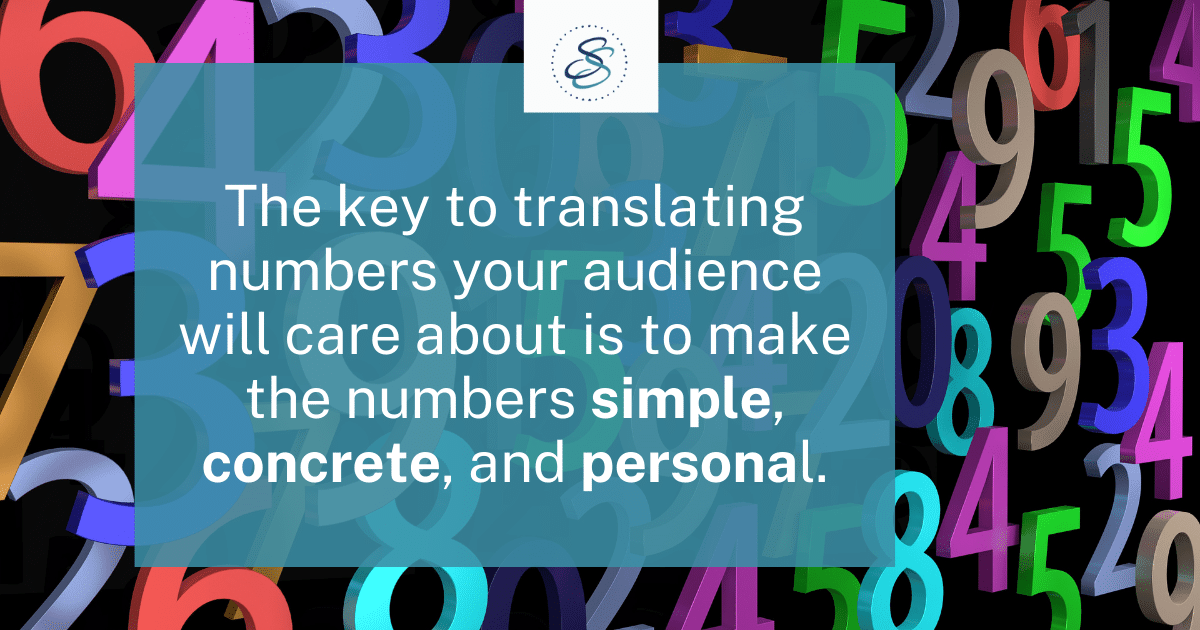Knowing the basic principles of numerical communication can help us become more effective and persuasive communicators.
A couple of months ago, I read “Making Numbers Count” by Chip Heath and Karla Starr who observed that we could lose our audience “when we don’t translate numbers into an instinctive human experience.” These translation techniques serve as important tools to use when we incorporate statistics and other numerical data in our presentations to influence others to adopt our ideas.
Our brain finds it hard to comprehend large, abstract numbers, and the higher the number, the less sensitive we are to it and what it means. The key to translating numbers your audience will care about is to make the numbers simple, concrete, and personal.
How to make your data more impactful:
1. Keep it simple.
Use round numbers instead of carrying the numbers out decimally, using fractions or percentages. Research has shown that people remember the rounded, whole versions of the numbers much better. If you were surveying an audience and found that 2/3 of them preferred sitting in the back of the room, rounding to say that 7 out of 10 preferred the back seats would be a better option.
2. Keep it concrete.
For example, according to the American Cancer Society, the average risk for a woman in the United States to develop breast cancer sometime in her life is about 13%. What does the 13% really mean? Translate that abstract statistic to “there is a 1 in 8 chance a woman will develop breast cancer in her lifetime” and the statistic is more personal and much easier to understand. Percentages are abstract; the “1 in 8” is much more concrete and will have more impact with an audience. When you have percentages as data in your presentation, think of ways you can translate them into more concrete and user-friendly comparisons.
3. Involve the senses.
Involving the senses when using numerical information can make your numerical translation more memorable. For example, explaining that an appropriate portion size for meat is 4 ounces is not nearly as effective as using your fist or a deck of cards to illustrate what 4 ounces of meat looks like.
Similarly, translating a numerical value into an action, such as ‘you’d have to walk 2 flights of stairs to burn off the calories in 1 M&M’ would leave a stronger impression with your audience than ‘a single M&M contains 4 calories’.
Even though these are just a few ways to make your numerical communication more memorable and impactful, the point is to translate your data into something more familiar and concrete for your audience. They will more easily understand the point(s) you are making with your data and are more likely to be influenced by it.

